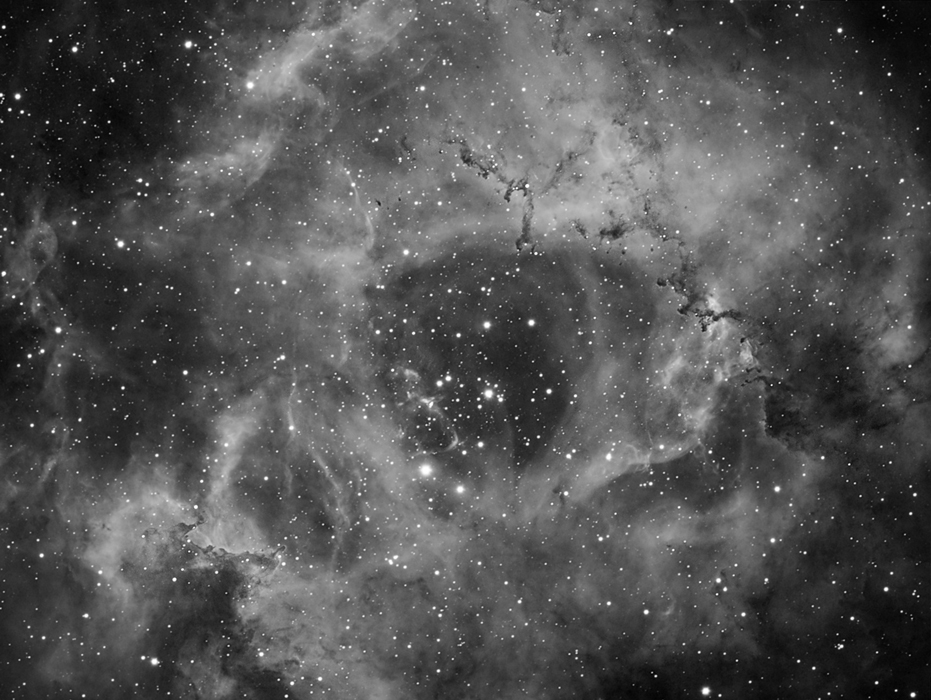The Rosette Nebula (NGC 2237-2239) in Hydrogen Alpha
Characteristics:
Magnitude: 4.8 (for NGC 2244 star cluster in center)
Size: 80' x 60'
Distance: 5500 light years
RA: 6h 31m
Dec: 4 degrees 57' 00"
Description:
The Rosette Nebula is a winter showpiece for astrophotographers, as
well as for visual observers at low power. This large emission
nebula is located in Monoceros and can be seen in dark locations with
the naked eye, especially if viewed through a UHC filter held up to the
sky. The nebula actually consists of several sections (NGC
2237-2239), with a central ladder like star formation known as NGC
2244. The central stars are young and newly-formed, and their
radiation is responsible for excitation of hydrogen atoms within the
nebula itself, which in turn emit light in the red. Make
sure to check out the composite
between
my Canon 10D
image
and the above Ha SXV-H9 image.
Photographic Details:
Date: February 23, 2004
Scope: Takahashi Sky 90 at f4.5 with field flattener/focal
reducer, piggybacked on LX90 (which is mounted on a Meade Superwedge).
Autoguider: STV with e-finder.
Camera: SXV-H9.
Filter: Astronomik Ha.
Exposures: 24 x 5' for a total of 120' exposure.
Conditions: Temperature 25 degrees F; below
average transparency; above average seeing; mild wind.
Post-processing: No dark or bias frames used. Auto-aligned in MaximDL;
Sigma combine using RC Sigma Reject MaximDL, followed by DDP adjustment
in
ImagesPlus. Levels and
curves adjustments in Photoshop CS. Smoothing performed using the
Neat Image plug
in (v3.17 Pro Plus), followed by selective unsharp masking of certain
areas.
Please
note: Graphics on this website may not be reproduced without
author permission.
Back to Hydrogen Alpha
Home

